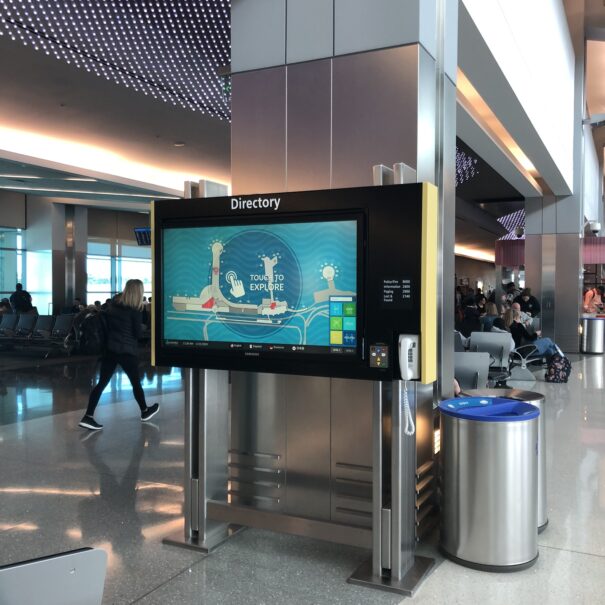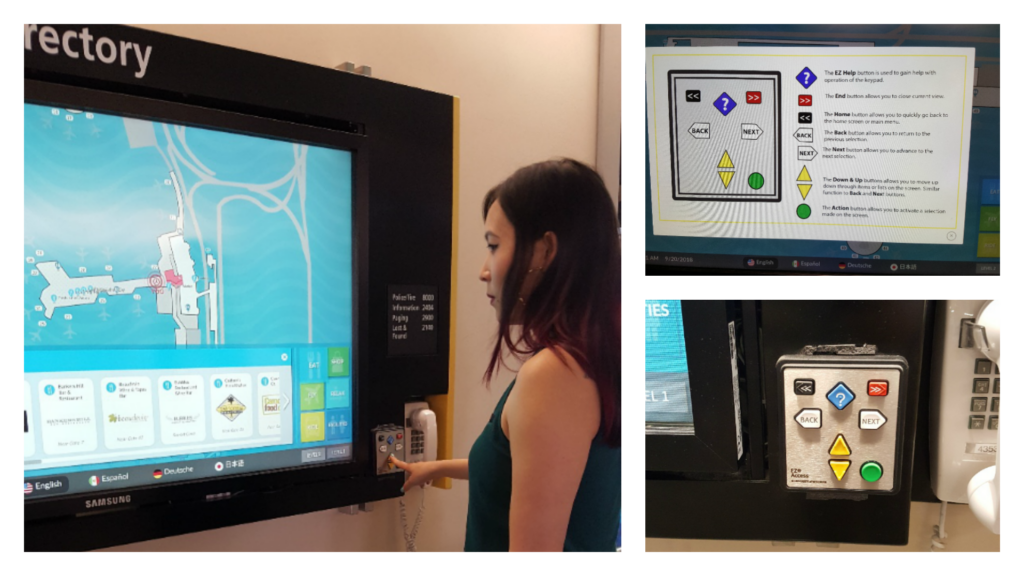SAN
Interactive Directory & Wayfinding

Enhanced Wayfinding
The San Diego County Regional Airport Authority selected Art of Context to create a wayfinding solution that would be accessible, effective, easy to manage, and budget friendly for the San Diego International Airport. SAN is the busiest single runway airport in the U.S. hosting more than 22 million travelers a year. SANs wayfinding wasn’t meeting the needs of passengers or staff. Maps were static as part of timed rotating images. Passengers frequently mistook them for interactive and were frustrated when they had to wait for the map to rotate back around. Staff had a hard time providing directions for the complex terminals as the maps weren’t oriented to users. Travelers with disabilities and non-English speakers also faced challenges when accessing the maps. Art of Context conducted an in depth analysis of SANs existing infrastructure and interviewed stakeholders to fully understand their needs. We determined that the screens and overlays could be reused, and for just $5,000, we replaced all 32 the players with low cost, reliable, Chromeboxes. Utilizing AOCs purpose built Directory Management Studio, we improved wayfinding, and provided greater accessibility for travelers with disabilities and non-English speakers.


Customizing Common Use
Terminal E are Common Use gates. ADP’s Sign Studio module drives the suite of displays that figure prominently in the boarding podium and within the gate pier. The ADP templates tie into both flight data and the boarding control app interface to display the correct complex scenario. This template-driven approach provides consistency while also allowing airlines the freedom to customize messaging to accommodate their specific boarding practices. From the Common Use terminal, agents log into an intuitive interface and can select necessary boarding groups (even boarding out of order if desired) and choose which doors are used. The signage within the gate pier adjusts for domestic or international arrivals or departures depending on whether travelers need passport control. If arriving travelers require customs clearance, signage directs them to the appropriate path. There are sign groups for international departures, domestic arrivals and international arrivals. The new gates are “swing gates”/”flex gates” They can accommodate one large wide body jet or the simultaneous boarding of two smaller planes. The process is data driven, so the signage will accommodate either scenario automatically.
Customs and Border Protection Compliance
The system accommodates the CBP Biometric Facial Comparison technology. Upon login, the gate agent selects standard or biometric boarding. If biometric boarding is chosen, the boarding process instructions and privacy notices are displayed on a totem sign satisfying Customs and Border Protection mandates. It's a complex system, but, by taking the time to understand stakeholders’ needs, and combining that with our depth of experience, AOC excels at making the complex simple. More than 43,000 international flights departed from Boston in 2022. This new process will allow airlines to customize the experience to their standards while providing an informative, expedient boarding process. To learn more about how Art of Context can help you improve your passenger experience with Airport Display Platform please visit us at www.artofcontext.com Colleen Hamilton is a principal with Art of Context, a Boston-based technology firm helping airports improve passenger experience through innovative technology solutions that reduce client administration and ensure extension for future innovations. Art of Context has recently been certified as a DBE.